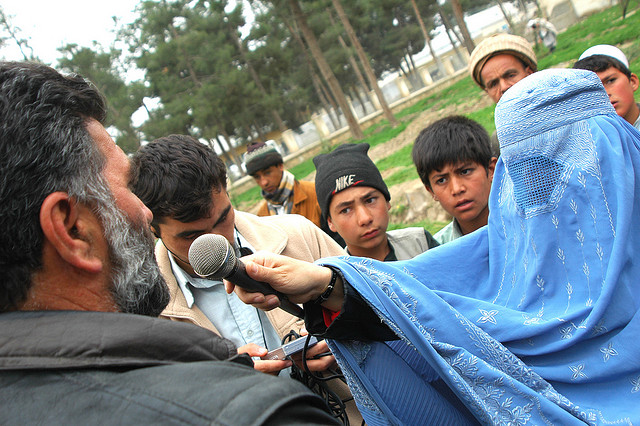Using audio creatively – update

In a previous post I shared some first impressions about using audio. Now Keith Ricketts and I have had more time to digest and think about what we’ve learnt, and it’s opened up more new ideas. Here’s a few:
- Think of internal as well as external audiences: we often think of audio as useful for publicizing an organization’s work on social media or its website. But it’s also a great tool for internal learning: record feedback from users or partners to play to staff – it’s much more powerful for them to hear people’s voices directly, and people may be less inhibited about talking to an outsider, even if they know that staff will hear what they have to say. In the review of KHFSP, the staff were very moved to hear first hand the appreciation from users of the service, and the real difference their work had made to families.
- Self-reflection: we found that people who made recordings were fascinated to listen to their own voices and stories. They sometimes commented that they’d never thought about the whole picture in that way before, but that listening to their own stories gave them the space to do that. There are many factors at work here: people often don’t feel ‘heard’, don’t have time to analyse their own situation, or may feel their experiences are too painful to think about. One young woman we interviewed listened to her 12 minute recording twice over.
- Gathering rich information: instead of going out with a questionnaire and clip-board, one organisation Keith worked with just went out into the street and asked people what they thought about a new service they were planning. In half an hour, talking to a group of 3 friends, and another person who stopped at random, they had gathered very valuable information. Many different staff could listen to the recordings, it was a lot quicker to get the info, and one of the quotes was even used as the marketing slogan!
- Use when anonymity is important: a voice recording can have the same impact as a video while protecting the person’s identity.
- Recording allows a volunteer to give testimony about their experiences which can be used many times. Some organisations for example, recruit supporters by having people who have been helped make presentations to groups. Making a recording only needs one session to capture, and is an efficient way to get the story across to many more people.
- When the subject is emotive and difficult to speak about in public a recording means that the person can speak with emotion about their experiences in the privacy of a small room, while still reaching out to large numbers of people.
If it grabs you then audioboo is the place to start posting some audio!
The photo is by ‘knottleslie’ on Flikr http://www.flickr.com/photos/34897016@N00/2424047237/in/photostream/. Used under creative commons licence.

